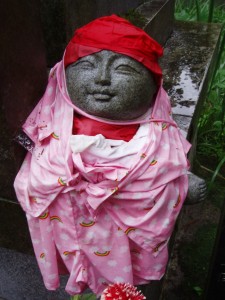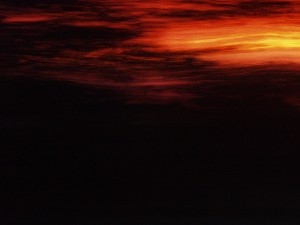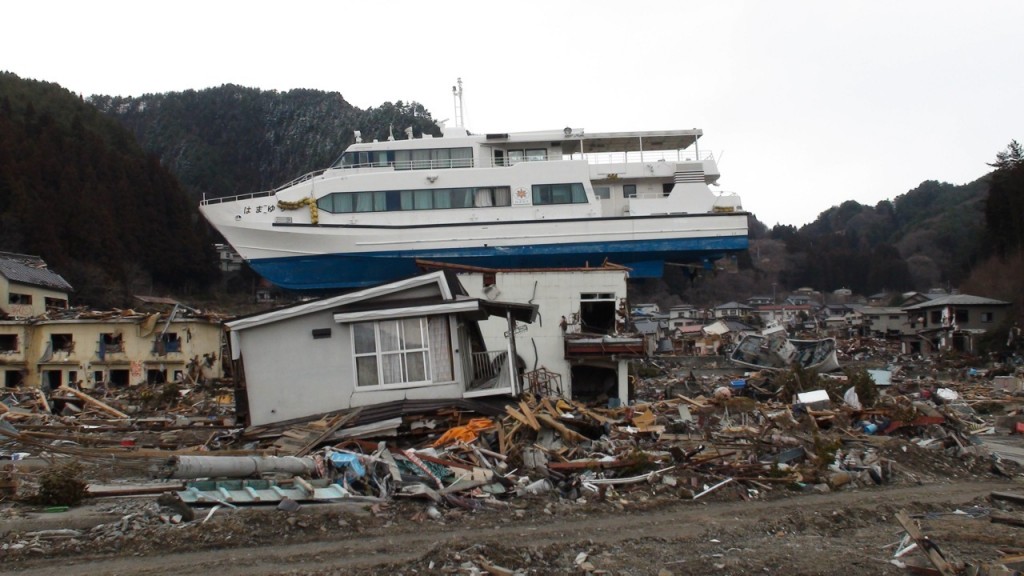3/11 Japanese Earthquake – The Untold Stories of Spiritual Response
Japanese religion today defies simple descriptions and it is often ignored. Some 70 percent of Japanese say they belong to no religion. But after 3/11 the spiritual beliefs that are deeply embedded in Japanese culture came into play. The religious response to the 3/11 catastrophe is an important part of the story of recovery.
In the tsunami’s immediate aftermath, people prayed, looking to their core beliefs and values for courage and understanding. Then the practical sides of religion came into play. Places of worship in Japan are said to outnumber convenience stores by a factor of four and community centers by a factor of nine. Temples, shrines, churches and other entities are everywhere and they often served as the centers where supplies were distributed and that welcomed people whose villages had disappeared and who were evacuated from the contaminated zones. Japan’s 80,000 temples and 85,000 shrines were logical sites for communities to gather, and, perhaps as evidence of historic wisdom, many were beyond the reach of the tsunami’s waves and thus survived.

The ubiquitous Jizo, mediating between this world and the next
Monks and priests in the areas affected were present from the very first moments and today, on the first anniversary, they will lead prayers for those lost and for recovery. They offer comfort and a link between past and future.
But the response of religious institutions extends far beyond traditional prayer and community. Japan also has a vibrant and complex set of newer religious movements and organizations that sprang into action. They used ancient and modern techniques: from personal appeals to followers to skilled media campaigns. While bureaucracies and governments moved slowly, hampered by rules, political infighting, and inadequate preparation, these groups mobilized aid efforts. They displayed strong organization and an ability to mobilize both funds and volunteers, among young people especially, and across international borders.
Tenrikyo, an organization founded in 1838, established a disaster response center and built on a long history of volunteering rooted in its religious practice of hinokishin. Soka Gakkai, the largest movement of its kind, immediately turned its Tokyo headquarters into an emergency communication center. Their northeastern facilities became shelters and centers to ship food and supplies to the surrounding areas. Rissho Kosei-kai, another large movement, mobilized ambitious relief efforts and raised large charitable donations. Their efforts were profoundly practical but they also offered spiritual support, to their own members and far beyond.
Worldmate, a new religious movement, combines elements of Shinto and Buddhist traditions and is involved in a remarkable tapestry of philanthropic efforts (its leader, Haruhisa Handa, is a trustee of the World Faiths Development Dialogue, which I lead). They instantly refocused their complex charitable work on northeast Japan. Teams with trucks delivered supplies of food and emergency supplies within days of the tsunami and their information was far ahead of government bulletins (they had members inside the Fukushima plant). As the nuclear disaster unfolded, the group looked far and wide for Geiger counters, and succeeded in borrowing them from a UK university. They called themselves the Godzilla squads, after the legendary monster created by nuclear radiation. They trucked supplies as far as the Geiger counters showed them to be safe, reaching many who felt abandoned and alone.

Tohoku: dawn of a new day
The active and constructive religious response to Japan’s 3/11 catastrophe caught some by surprise and it has received fairly scant attention. But what happened may well stand as an important landmark. It shows what one leader calls the unconscious religiosity of the Japanese: an amorphous sense of being connected to something transcending the self, a gratitude to the ancestors, divine beings, and people in general. It is alive, he says, even within those who say that they have no religion.
While the traditional shrines and temples served as havens that helped to rebuild communities, the newer religious movements played different roles. Appealing especially to young people, they showed that religion in Japan has dimensions that are modern and focused, combining traditional appeals to solidarity and spirituality with modern capacities to mobilize and direct energies to productive ends.
This religious story shows an important if often obscured face of Japan. It is part of Japan’s remarkable response to the disaster, part of the fortitude, community solidarity, and determination to rebuild that we must admire and salute as we mark 3/11’s first anniversary.


Leave a Reply